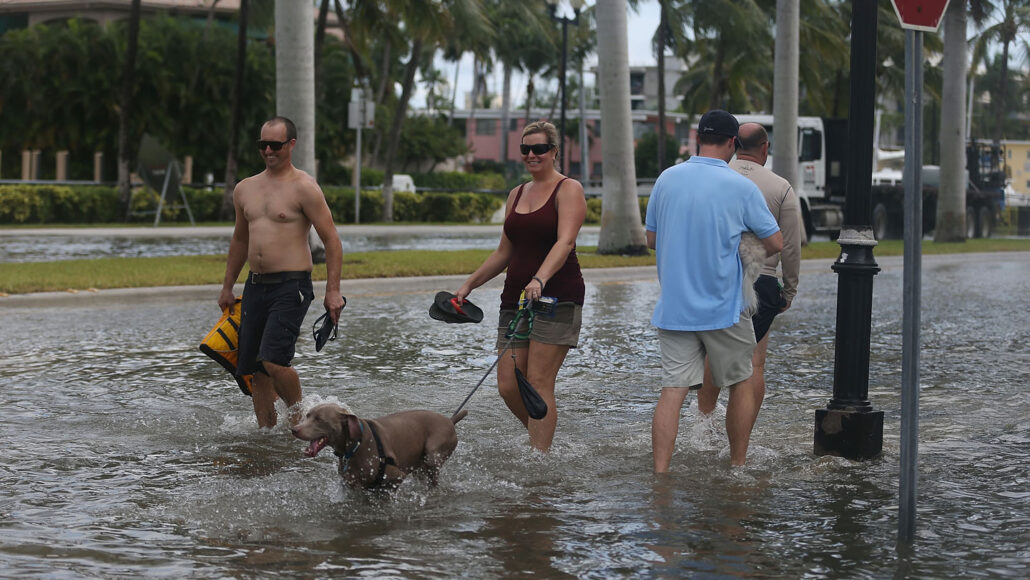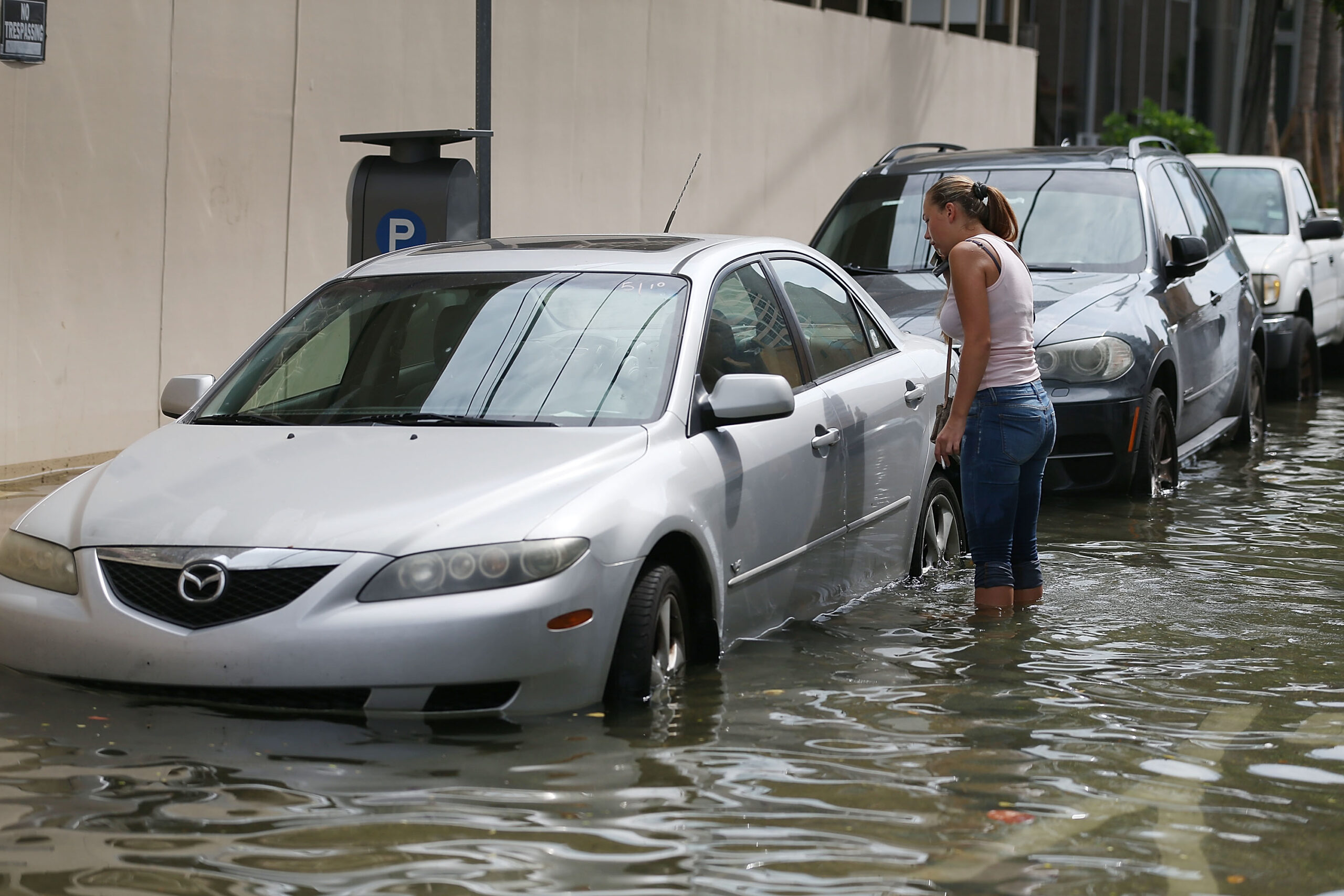Moon’s orbital wobble can add to sea-level rise and flooding
Look for impacts of this boost to begin showing up in a dozen years or so

Even in the absence of rain, tides can occasionally flood the streets of coastal cities, such as here in Miami, Fla. Soon, a tide-enhancing wobble in the moon’s orbit will kick in, making things far worse, a new study reveals.
Joe Raedle/Getty Images News
By Sid Perkins
Sea level rise is a big problem in many coastal cities. But in a dozen or so years, their flooding could become more frequent and widespread, a new study finds. And that bonus flooding could show up even in the absence of rains or lashing storm winds.
The problem is known as tidal flooding. During almost two-decade-long cycles, effects of the moon alter coastal sea levels. When experienced on top of rising sea levels due to climate change, a boost in flooding could put many coastal regions at big risk.
This next lunar boost to coastal sea levels is due to kick in some 12 years from now. There’s no way to prevent it. But its impacts are foreseeable. And that, scientists say, should prompt communities to plan for what’s coming, like it or not.
What’s behind this — or maybe above it
The moon’s orbit around Earth forms a plane. Earth’s orbit around the sun forms a plane, too. But the two planes don’t exactly line up. As seen from Earth’s point of view, the moon’s orbit appears to wobble like a spinning top. A single wobble takes about 18.6 years, notes Gary Mitchum. This physical oceanographer works at the University of South Florida in St. Petersburg.
At some times during each 18.6-year cycle, the sun, Earth and moon are perfectly aligned. That’s when the moon is full or new. These are the times when high tides are elevated most, says Mitchum. (Coincidentally, they’re also the times when we can see solar or lunar eclipses.)
At other times, the sun, the Earth and moon don’t line up during full and new moons. (That’s why we don’t see eclipses each and every month.) In fact, the moon can vary as much as 5 degrees away from a perfect alignment at new and full moons. During those times, the combined pull of the sun and moon are at their weakest. High tides are thus at their lowest.
For half of the moon wobble’s 18.6-year cycle, “high tides are higher than average,” Mitchum says. The other half, they’re lower than average. Importantly, during the part of the cycle when high tides are shifting toward lower levels, that shrinking effect can mask the true impact of sea level rise due to climate change. Here, though sea levels keep rising, a trend toward smaller high tides can help hide that.
This masking effect could lead to a false sense that climate-driven sea-level rise isn’t so bad, Mitchum worries. To find out how much masking might occur, Mitchum and his colleagues analyzed data. It came from a diverse host of U.S. sites. It let them project how the moon’s orbital wobble will affect tides in coming decades.
Nuisance flooding on the rise
Right now, those effects are growing, the researchers note. But they’re beginning to level off. In about four years, high tides will start to shrink back toward lower levels. But starting in 2034 or so and continuing into the 2040s, the tide-boosting effect of the moon’s wobble will again start stacking up on top of rising sea levels, the team notes.
For instance, it estimated how high tides would change in Mitchum’s home town of St. Petersburg. One previous study suggested that the sea level here will rise about 8.9 centimeters (3.5 inches) between 2024 and 2033. But more than half of that amount — or about 4.6 cm — will be masked by the trend toward lower high tides, the new study finds. Then, in the decade after that, the tides really turn. During those years, sea levels are due to increase about 9.4 cm. And the tide-enhancing effects of the moon’s orbital wobble will then add another 14.1 cm on top of that, bringing the total to 23.5 cm (9.3 inches)!
Mitchum and his teammates describe their findings in the July 2021 Nature Climate Change.

Overall, the team estimates, nuisance flooding in St. Petersburg will occur on 67 more days in the years from 2033 to 2043 than it will in the decade before that. “There’s no way to prevent this, says Mitchum. “But if you know what’s coming, you can prepare.”
Knowing about this problem well in advance is vital, agrees Brian McNoldy. He’s an atmospheric scientist at the University of Miami in Florida. Building the infrastructure to protect coastal areas will take large new engineering projects. And keep in mind, he notes, it can take almost a decade to get funding, permits and other paperwork needed to get started.
The alternative — doing nothing — isn’t pretty, he adds. At a minimum, “It doesn’t take much nuisance flooding to screw up traffic.”







